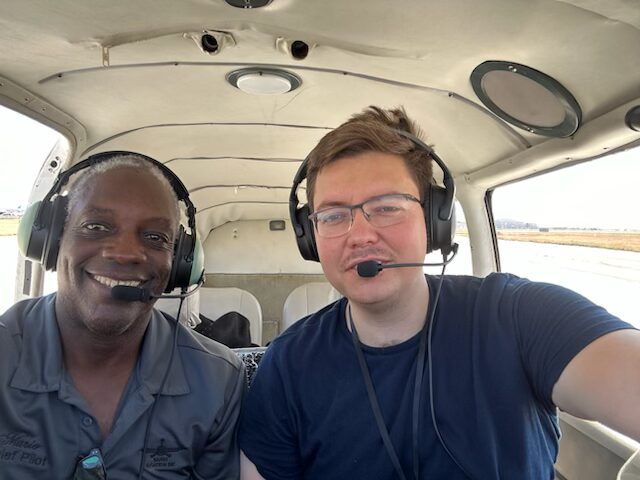
Boeing’s latest Pilot and Technician Outlook (PTO) 2025–2044 keeps the runway wide open for aviation careers. The company projects airlines will need 2.37 million new professionals over the next 20 years: 660,000 pilots, 710,000 maintenance technicians, and 1,000,000 cabin crew to fly and maintain the world’s commercial fleet. It’s one of the clearest signals yet that aviation remains a durable, opportunity-rich sector for people ready to train.
What’s driving the appetite for talent? Boeing notes that global air travel demand continues to outpace economic growth, even after a turbulent decade. The PTO emphasizes that effective training and a stable pipeline of qualified personnel are now critical to safety and growth. Importantly, the forecast focuses on commercial aviation (30+ seat aircraft) and excludes business aviation and civil helicopters—meaning the headline numbers may understate total industry needs across all flying.
Training itself is changing fast. Boeing highlights how digital learning, mixed reality, and AI-assisted tools are moving training toward competency-based outcomes and faster skill acquisition. Expect more immersive sims, data-driven maintenance curricula, and new pathways that accelerate early career development. For students entering in 2025, that translates into more flexible, tech-forward learning and—crucially—safer, more efficient training pipelines.
The need is global, but the map isn’t uniform. Boeing’s regional breakdown shows North America will require about 435,000 new personnel, including 119,000 pilots and 123,000 technicians—figures propelled by retirements and sustained traffic growth. China (426,000 total) and Eurasia (550,000) are also enormous demand centers, while Southeast Asia (243,000) and the Middle East (234,000) continue to expand with young fleets and route growth. For jobseekers, the message is simple: there are multiple geographic runways for a flying or maintenance career, from legacy hubs to fast-growing markets.
If you followed Boeing’s PTO last year, you’ll notice a small tweak: pilot demand is trimmed slightly from 2024 (down roughly 2.1%) but still historically high. In other words, the industry still needs hundreds of thousands of new aviators; the needle only moved from “acute” to “acutely strong.”
The human spark: why people still choose to fly Forecasts are useful. Passion is what gets students to the airport at dawn. Few people speak to that spark better than Mario McGee, founder of Bario Aviation in San Antonio, Texas. McGee’s own path began with a childhood moment watching a crop duster arc over fields on a family road trip. What an astounding image that turned into a life in the cockpit and more than 10,000 flight hours, much of it instructing. Asked what makes flying so transformative for students, he puts it this way: “After the first time you land an airplane, and after the first time you take a solo flight, that feeling of accomplishment stays with you forever.” Pilot Ignacio Jesus Valdes, who successfully completed advanced flight and instrument trainings at Bario, concurs. Both Valdes and McGee are the first in their immediate families to fly. “That sense of personal agency, the idea that you can command a complex machine in three dimensions,” says Valdes, “explains why pilot training remains magnetic even as airlines and regulators ratchet up standards.” It also dovetails the view that early exposure, accessible training, and clear pathways are essential to build tomorrow’s workforce.
For would-be pilots, the next question is where to start. McGee’s Bario Aviation operates at Kelly Field (KSKF) in Port San Antonio, with a footprint designed to meet students where they are: career-changers, first-time flyers, and returning aviators polishing advanced skills. The school provides a one-stop mix of services—flight training, aircraft rental, maintenance, and air tours—that supports a full training lifecycle from first lesson to checkride and beyond.
Bario’s training environment also benefits from the airport’s uncongested airspace and quick access from downtown, a combination that helps students maximize learning time in the air rather than idling on taxiways. That convenient ecosystem (hangar, classroom, dispatch, and runway) reflects how modern schools are aligning to Boeing’s call for capacity and efficiency in the training pipeline.
On the equipment side, Bario fields a practical training fleet, including a multi- engine trainer (N694JS) with an upgraded Garmin panel, an asset for pilots chasing multi-engine ratings and employers who prize instrument proficiency and avionics fluency. The school’s published offerings and regular fleet updates reinforce a basic truth about today’s training market: currency and capability matter.
Put Boeing’s macro view together with McGee’s on-ramp and the outlook for 2025 looks unusually aligned: strong long-term demand plus schools built for throughput and quality.
For students, three practical implications stand out:
Timing favors early movers. With pilot retirements continuing and fleets growing,
students who begin in 2025 could be “job ready” as airlines and regional carriers
keep hiring to fill crews and backfill retirements.
Training is modernizing. Expect more competency-based syllabi, VR/AR for
procedures and safety scenarios, and data-rich maintenance education, all of
which can help you learn faster and safer. Choose schools that lean into these
methods.
Paths are plural. The regional data make clear there’s no single “right” market.
North America remains robust; Asia and the Middle East are dynamic; Europe
and Latin America show steady need. Licensing portability and type-rating
strategy can unlock multiple geographies.
Back in San Antonio, McGee says the motivation he sees daily isn’t abstract. It is personal. Students range from airline-ambitious career changers to lifelong dreamers finally scheduling that first lesson. The school’s role is to turn enthusiasm into proficiency through consistent instruction, a safe culture, and enough capacity that students actually fly.
Bottom line for 2025: the numbers are real, the technology is ready, and the flight line is open. For anyone who’s ever looked up at a contrail and wondered, could that be me?—the industry’s answer is yes. And for many of those future aviators, places like Bario Aviation at Kelly Field will be where that yes starts to take off.

